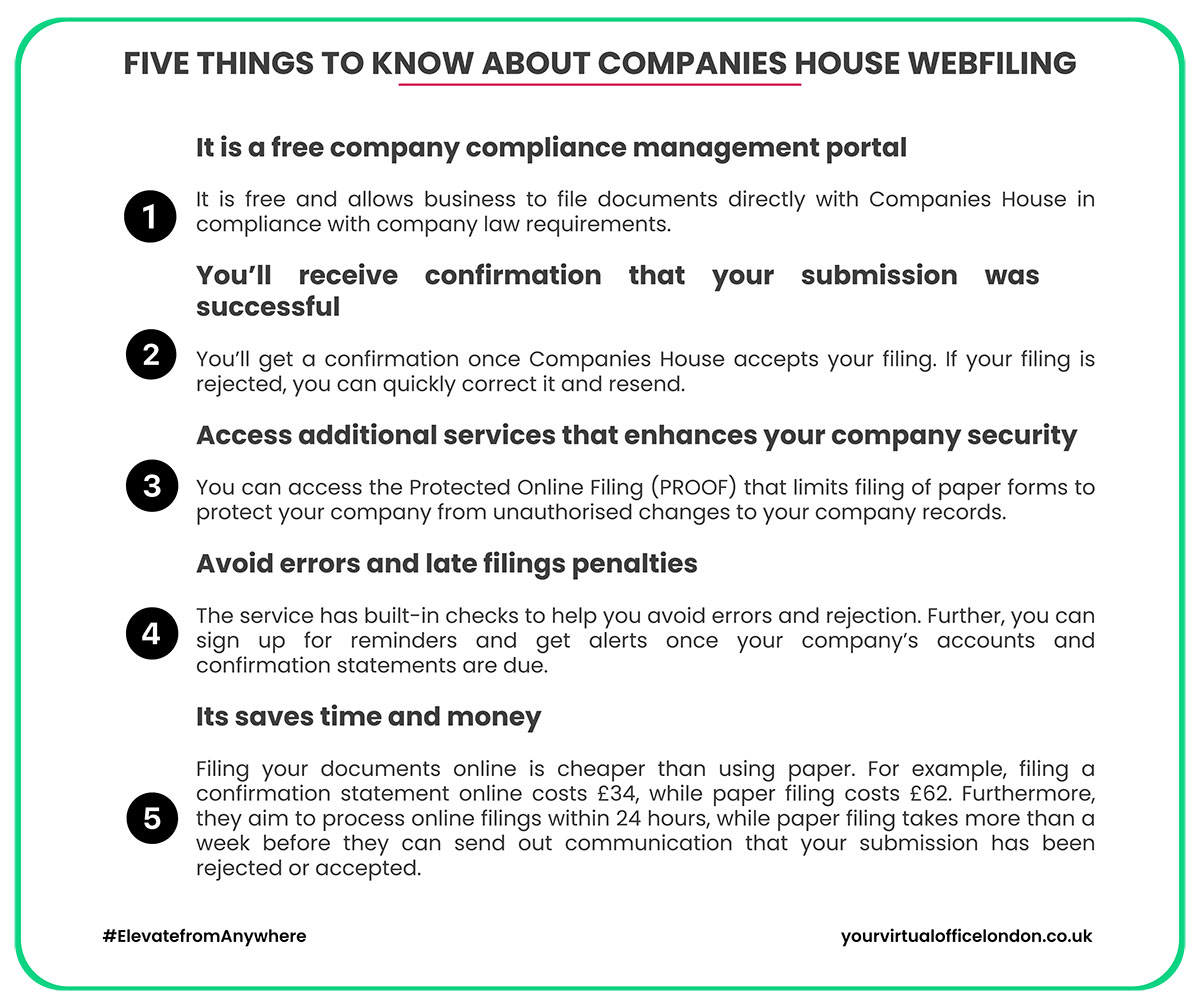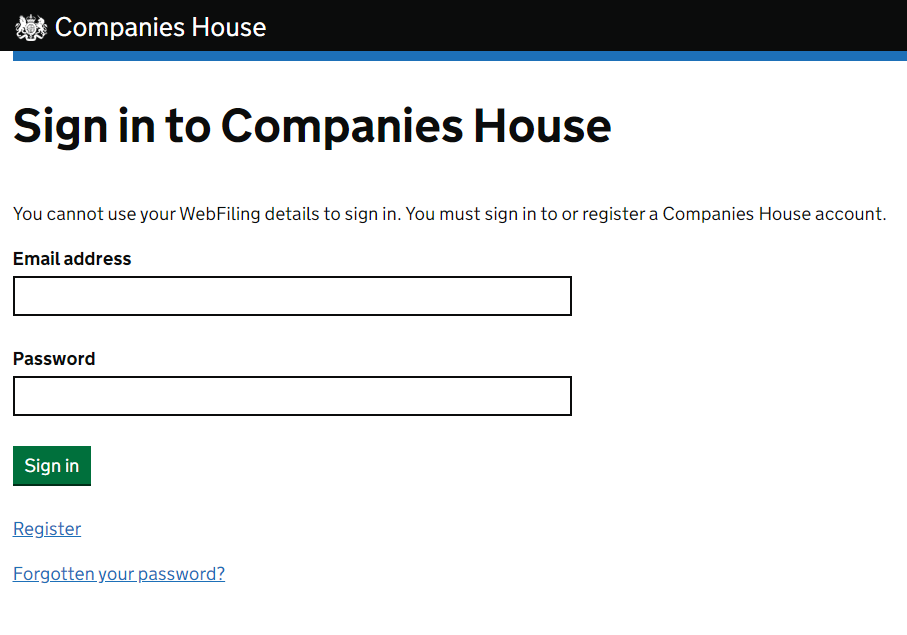🔑 Key Takeaways
- You can set up a limited company online through Companies House or a trusted formation agent, typically within 24 hours.
- The online company registration process requires a company name, UK address, director details, and a Government Gateway account.
- You must pay a small fee by card or PayPal and register for corporation tax unless your company is dormant.
- Using a company formation agent like Your Virtual Office London removes paperwork, speeds up setup, and often includes perks like a free business bank account with cashback.
Setting up a limited company online might sound complex, but it doesn’t have to be.
If you're ready to register your company and launch your new business, the real challenge is choosing the fastest and most reliable way to do it.
Should you go directly through Companies House or use a company formation agent who can guide you through the process with no paperwork, no errors, and extra perks like a free business bank account?
The wrong move can lead to delays, rejected applications, or unexpected admin headaches.
In this guide, you'll learn exactly how to set up a limited company online, step by step, whether you're doing it yourself or want it handled by experts. We'll break down what you’ll need, what it costs, and how to form your company in just a few clicks.
What do you need to register a company online in the UK?
Before you register a UK company, it’s important to have the right details prepared so your application goes through smoothly on the first try. Whether you’re forming a private limited company, one that’s limited by shares, or another company type, the process moves quickly when your information is ready.
Here’s what you’ll need to form a limited company online:
- A unique company name: Use the Companies House name availability checker to confirm your name is free.
- Company director and shareholder details: Every UK company needs at least one director. Shareholders can be individuals or other companies.
- A registered office address: This must be a physical business address in the UK where official mail can be delivered.
- SIC code: This is a five-digit number that identifies what your new company does (e.g., tech, retail, consulting).
- A Government Gateway account: This lets you access HMRC services and complete your corporation tax registration after incorporation.
- A payment method: To pay the registration fee, you’ll need a valid debit/credit card or PayPal.
- A business bank account (optional): While not required for registration, opening one early helps manage finances and receive payments.
Having these ready will save you time and help you set up your company in the UK with zero delays.
Step-by-step: How to set up your limited company online?
The process to set up your limited company online is simple, fast, and efficient, especially when you know what to expect.
Whether you choose to go through Companies House directly or work with a trusted company formation agent, the steps are largely the same, but the support level varies significantly.
Here’s how to get your company legally registered in the UK in just a few steps:
1. Check if your preferred company name is available
Your company name must be unique and meet official naming rules.
You can use the Companies House name checker to see if your preferred company name is available.
If your company name is already taken, you’ll need to modify it slightly. Be sure to avoid names that are too similar to existing businesses, or include restricted terms unless you have approval.
Further reading: Easy tips for choosing a company name that gets approved
2. Choose your company structure
The next step is deciding on your company type.
Most people choose a company limited by shares, which is suitable for for-profit businesses. However, if you're a charity or non-profit, you might prefer a company limited by guarantee.
Other options include forming a limited liability partnership (LLP) or setting up a dormant company if you're not planning to trade immediately. Each limited company structure has different legal and financial obligations, so choose the one that fits your long-term vision.
3. Gather your company details
You'll need to input all your company details during the company formation process. This includes:
- A UK registered office address
- At least one company director
- Shareholder information
- A breakdown of your business activities using SIC codes
- Statement of capital (for companies limited by shares)
- Optional: a company secretary (not legally required)
Having these details ready streamlines your company formation and registration.
4. Register through Companies House or use an agent
You now have two main options to form your company online:
- Direct through Companies House: You’ll complete the forms yourself using their online portal. You must create a Government Gateway ID, and the process typically takes 24 hours if everything is correct.
- With a company formation agent like us: This is not a self-service platform. Our expert team will take your details and complete your application for you accurately, quickly, and without paperwork or guesswork. We offer complete company formation packages, including optional add-ons like business address services or bank account setup.
Whichever route you choose, you’ll be issued with a company number and certificate of incorporation once your company has been approved.
Also see: Companies House identity verification launch guide
5. Pay the registration fee online
The fee to register a limited company with Companies House is currently £12 if done online and can be paid by credit/debit card or PayPal.
Formation agents typically charge a small additional fee in exchange for more support and extras like a company address, document handling, or business account referrals.
6. Get your Certificate of Incorporation
Once your company has been incorporated, you’ll receive your official certificate of incorporation, confirming that your limited company is a separate legal entity.
You’ll also get your:
- Company registration number
- Incorporation date
- Company status (e.g., active or dormant)
These documents are important for opening a business bank account or entering into contracts.
7. Register for Corporation Tax
If your company is active (i.e., not dormant), you must register for Corporation Tax within 3 months of starting business activities. This also applies if you plan to hire employees, requiring PAYE registration as well.
This step is done through your HMRC account, using your Government Gateway ID.
8. Open a business bank account
While it’s not mandatory to open a business bank account to form a UK company, it’s a smart move, especially for managing your business finances, receiving payments, and keeping personal and company money separate.
Many company formation services now include free business bank account referrals with perks like cashback, making this a great time to get your banking sorted.
Whether you choose to go the DIY route or use a company formation agent, these steps will guide you through the UK company formation process with clarity and confidence.
DIY vs using a company formation agent: What’s faster and easier?
When it comes to registering your limited company, you have two main routes:
You can either form a company yourself through Companies House or use a trusted company formation agent to handle the process on your behalf.
Here’s how both options compare:
| Feature | Companies House (DIY) | Formation Agent |
|---|---|---|
| Speed of Registration | Usually within 24 hours | Same-day processing available |
| Ease of Process | Self-managed, must fill out forms | No forms to complete, agent handles everything |
| Errors & Rejections | Higher risk due to manual input | Experts ensure accuracy and compliance |
| Included Services | Basic registration only | Can include business address, document storage, and reminders |
| Business Bank Account | Not included | Often bundled with free account setup + cashback |
| Support & Guidance | None | Full support via email or phone |
| Ideal For | Experienced users | Busy entrepreneurs, first-time founders, overseas applicants |
If you want a fully hands-off experience, avoid paperwork, and set up your limited company online with expert accuracy, using a formation agent in the UK is your best bet.
You’ll save time, reduce risk, and gain access to helpful extras like banking perks, company documents storage, and ongoing company secretarial reminders.
No forms or signatures are required; just submit your details and let our experts register your company today.
How much does it cost to register a limited company online?
Setting up a limited company in the UK doesn’t have to be expensive, especially if you choose the right method.
The official Companies House filing fee is just £12 when registering directly, but this only covers the basic company incorporation with no additional support or services.
If you choose to form your limited company through a trusted formation agent, you’ll benefit from expert handling, no admin stress, and added services designed to help you set up your business more efficiently. Our formation packages start from just €50, with flexible options depending on the level of support you need.
Here’s what’s typically included in our company formation packages:
- Company name availability search
- Full company registration UK with Companies House
- UK business address for official correspondence
- Certificate of Incorporation and company documents
- Optional mail forwarding and digital scan service
- Introductory offer for a business bank account with cashback
- Access to additional services like VAT & PAYE registration
Whether you're based outside of the UK or a local entrepreneur, our all-in-one package makes it easier than ever to register your company with Companies House and hit the ground running.
✅ Insight
You can get back the full cost of forming your company through our banking partners, offering cashback on new accounts. That means your company order could pay for itself, literally.
Do you need a business bank account to register a UK company?
No, you don’t need a business bank account to register a UK company, but you’ll almost certainly need one to operate it.
Once your company has been incorporated, separating your personal and business finances is essential for maintaining legal clarity, especially if you’ve chosen a limited company structure, which is considered a separate legal entity.
Many banks now offer tailored business accounts for different types of companies, and some even provide cashback or fee-free incentives for new business owners.
Having a dedicated account also helps with accounting, tax reporting, and staying compliant with the legal obligations for a limited company, whether you're a sole trader or a limited structure.
Also read: How to get a proof of address in the UK and open a bank account?
Key legal requirements when registering a company in the UK
Once you set up a company in the UK, a few essential legal obligations kick in, regardless of your type of company. These aren’t just formalities; they’re required by law to keep your business compliant, active, and in good standing with Companies House and HMRC.
Here are the key legal requirements you need to follow after you form a UK limited company:
1. Register for Corporation Tax
If your business is active and trading, you must register for Corporation Tax within three months of starting operations. This applies whether you’re a sole trader or a limited company, and failure to do so can result in penalties from HMRC.
2. Keep your company details updated
Once your company is at Companies House, you’re legally required to keep your records accurate and current. That includes:
- Changes to your company director or shareholders
- Updates to the address for your company
- Shifts in business activity or legal structure
You can file these updates using the Companies House WebFiling service.
3. Choose the correct company structure
The most common type of limited company is a company limited by shares, suitable for most for-profit businesses. However, depending on your mission and setup, you may also choose a company limited by guarantee, a partnership, or a limited company hybrid structure.
Choosing the wrong structure can lead to unnecessary tax burdens or limit your growth options, so deciding early and correctly is essential.
❌ Warning
Failure to meet your legal obligations after company registration can lead to fines, director disqualification, or even compulsory company dissolution. This includes not registering for Corporation Tax, failing to update your company details at Companies House, or choosing an incorrect structure. Always ensure you understand your responsibilities from day one.
Final thoughts
Now you know exactly how to form a limited company online, what’s required, and which option fits your needs: DIY or expert-assisted. While both routes get your company to Companies House, using a formation agent offers faster setup, no paperwork, and ongoing support.
Want to get started today?
Skip the hassle and let our team register your company in just a few clicks, accurately, efficiently, and with extra benefits like banking perks and digital document handling.






















































